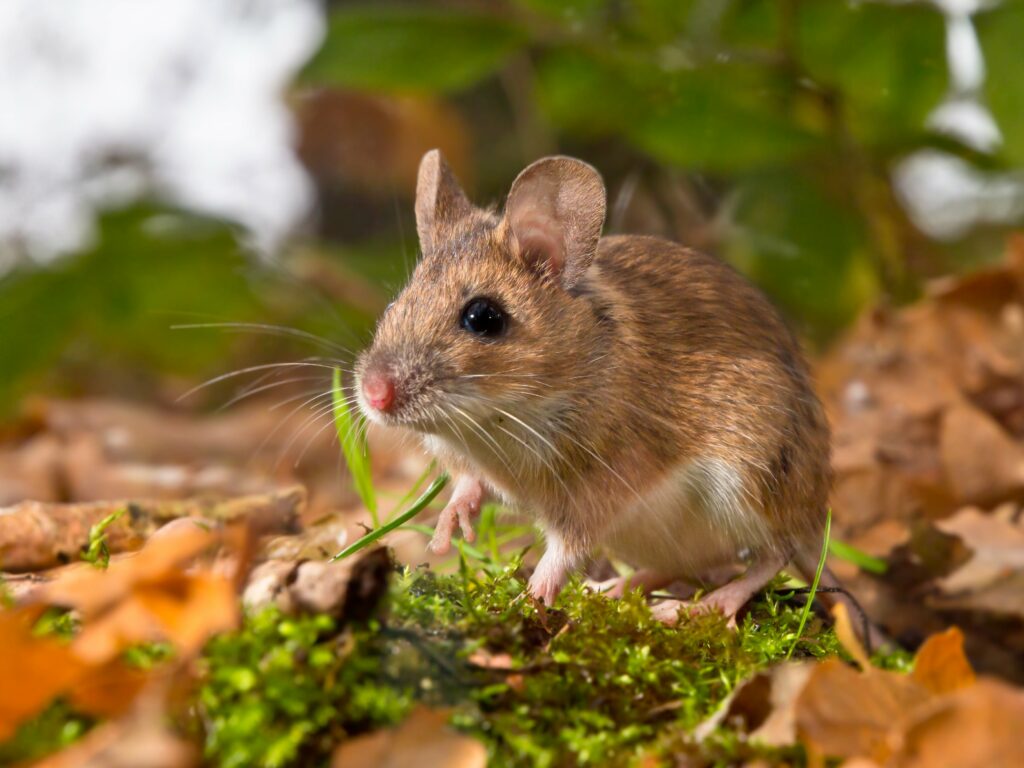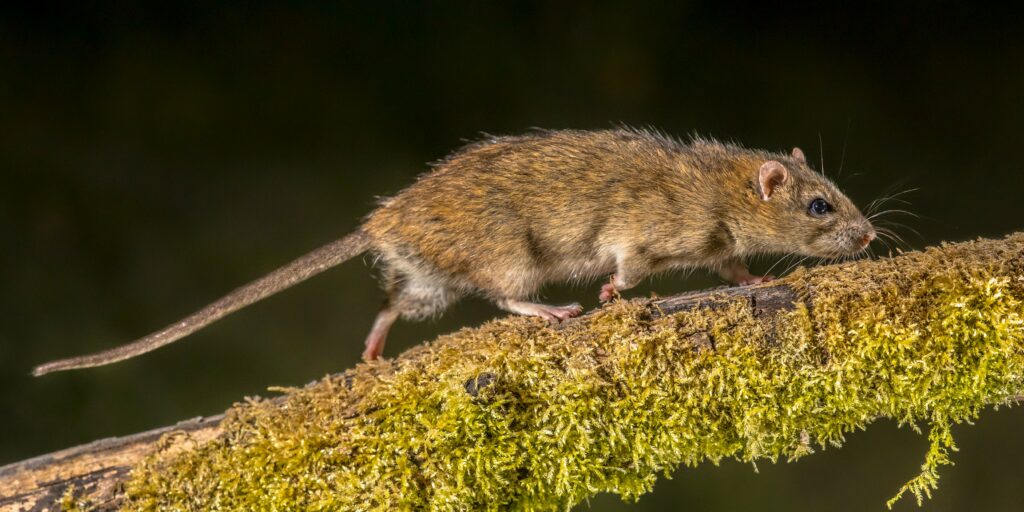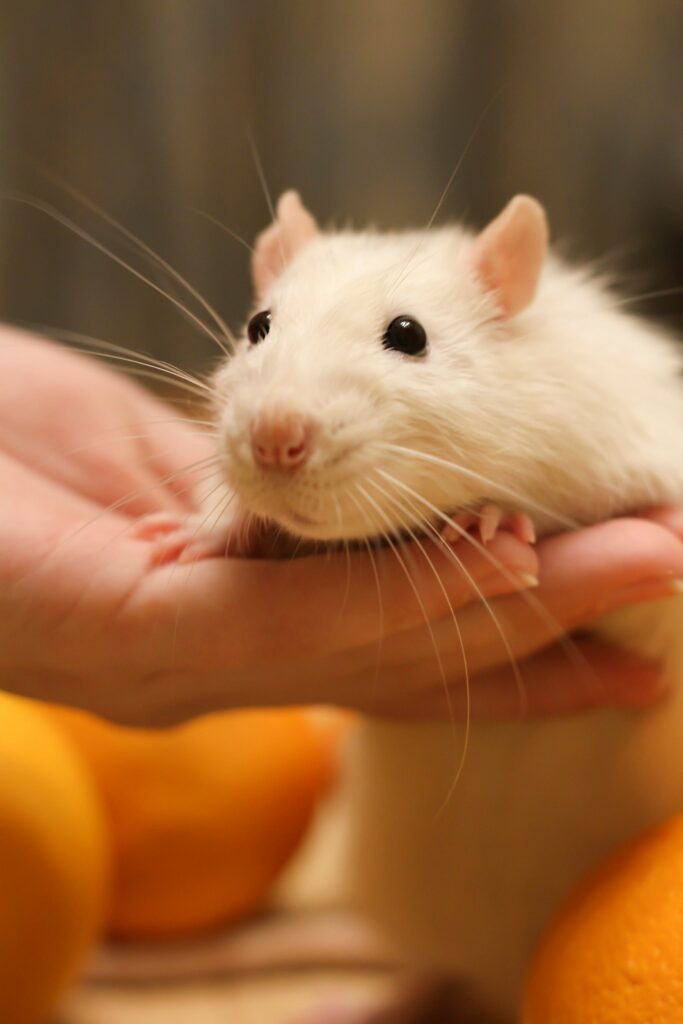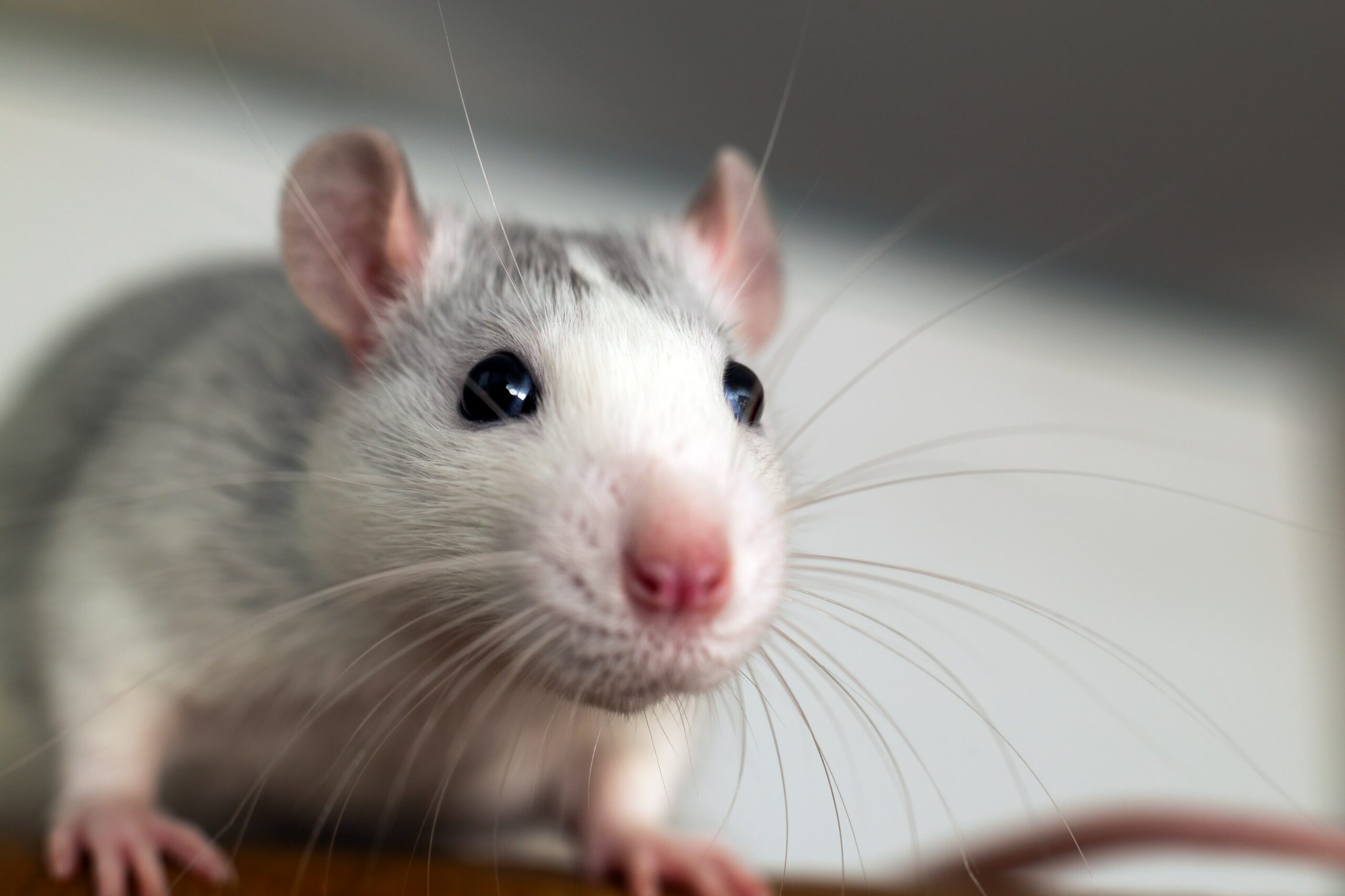Understanding the Physical Characteristics and Features of Mice
Mice are common rodent species that can be found in many parts of the world, from rural areas to urban cities. These tiny creatures are known for their small size, round ears, long tails, and pointed snouts. While they may seem like insignificant pests to some, understanding their physical characteristics and features is incredibly important for many reasons.
Firstly, mice are excellent climbers and can quickly enter homes or buildings through small openings in walls or roofs. They are attracted to food scraps and nesting materials, which means that a rodent infestation can quickly occur if proper precautions aren’t taken.
Additionally, rodents carry diseases that can be harmful to humans and pets alike. By understanding their physical characteristics and habits, we can better protect ourselves from these diseases and potential harm.
Step into the enchanting world of mice and satisfy your curiosity about their behavior. Our illuminating article, Uncovering The Secrets Of Mice: Exploring Behavior And Characteristics, offers an immersive experience where you can delve into their actions, characteristics, and more. Begin your journey of discovery now
The Common Mouse: Deer Mice

One of the most common types of mice in North America is the deer mouse. They typically have reddish-brown fur on their backs with white undersides and white feet. Their prominent ears help them detect predators or prey while they scurry around looking for food.
The Importance of Understanding Mouse Adaptations
It’s not just their appearance that makes mice special – they have numerous adaptations that make them well-suited to survival in a variety of environments. For example, mice have large ears relative to their body size which allow them to detect even the faintest sounds – an essential ability when you’re always on the lookout for predators or other dangers. Another adaptation is related to their teeth – specifically their incisors which never stop growing throughout their lives!
This enables them to gnaw through tough materials like electrical wiring or even concrete walls if necessary. Additionally, their hind feet have five toes while front feet only have four as part of an adaptation for climbing trees as well as jumping over obstacles when running.
Understanding the physical characteristics and features of mice is crucial for anyone who wants to prevent rodent infestations or avoid potentially dangerous situations caused by these pests. By knowing what to look for and how mice behave, we can better protect ourselves and our homes from the negative impact of rodents.
Body Size and Shape
Comparison of sizes between different mouse species
When you think of mice, you may imagine a small, gray house mouse scurrying across your kitchen floor. However, there are actually many different mouse species found all over the world that vary in size and shape.
For example, the deer mouse is another common North American species that is slightly larger than the house mouse and has a reddish-brown back with white undersides. In contrast to deer mouse, some tropical mice can be as small as your pinky finger.
Description of typical mouse body shape (long tail, pointed snout, round ears)

Despite their differences in size and coloration, most mice share some common physical characteristics. They have long tails that are usually longer than their bodies and help them balance when scurrying along narrow surfaces such as tree branches or electrical wires.
Their snouts are pointed and used for sniffing out food or nesting materials, while their large eyes and prominent ears help them detect predators or other mice nearby. In terms of overall body shape, most mice have a round body with short legs that allow for quick movement both on the ground and when climbing.
They also have distinctive hind feet that are longer than their front feet and have five toes each for added gripping power. All these physical features make them efficient at navigating through tight spaces to find food or shelter – something that can become problematic if they decide to invade our homes!
Fur Color and Texture
Range in Color
Mice come in a range of colors from white to black, with many shades of gray and light brown in between. Each species may have a unique color palette. For example, deer mice often have reddish brown fur while house mice tend to be solid gray or brown.
Mice that live in different environments can also have slightly different colors, giving them better camouflage. It’s not uncommon to see a mouse with speckled or mottled fur as well.
Differences in Texture
The texture of a house mouse’s fur can tell us a lot about its lifestyle. Wild mice generally have coarser hair than domesticated ones because they spend more time outdoors and need protection against harsh weather conditions. House mice, on the other hand, have softer and finer fur because they live indoors where temperatures are more moderate and there is less exposure to the elements.
The texture of a mouse’s coat can also change throughout the year as they shed their old fur and grow new hair during different seasons. Fur color and texture are important features that distinguish one species of mouse from another.
While some people may view mice as pests that need to be eradicated, it is essential to understand their physical characteristics for scientific research purposes or even just for humane pest control methods that don’t harm these innocent creatures. By understanding what makes them unique, we can appreciate these rodents for their adaptability and resilience despite their small size and low position on the food chain.
Eyes and Vision: Large Eyes Relative to Body Size

Mice have relatively large eyes compared to their small, compact bodies. These eyes are positioned on the sides of their heads, providing them with a wide range of vision. The size of their eyes is particularly important because they are nocturnal creatures that rely on their keen sense of sight to navigate in the dark.
They have adapted well to low light conditions and can see quite well in the dark, allowing them to search for food and avoid predators. Despite having such large eyes, mice do not have great visual acuity.
In fact, they are nearsighted and only able to focus clearly on objects that are very close to them. This is one reason why they rely so heavily on their other senses like smell and hearing in order to navigate their environment.
Adaptations for Nocturnal Vision
Mouse vision has evolved over time in order for these small rodents to survive and thrive at night when most predators hunt. One adaptation is the presence of a reflective layer behind the retina called the tapetum lucidum.
This layer reflects light back through the retina, increasing sensitivity in low light conditions. Additionally, mice also possess a special type of rod cell (photoreceptor) called scotopic rods that are more sensitive than human rods.
These scotopic rods allow mice to see very dim lights but at a cost: they cannot differentiate between colors as humans can. Overall, mouse vision is optimized for nocturnal activity; it allows them enough visual acuity during darkness without compromising other senses crucial for survival like hearing or smell.
Teeth and Jaw Structure
Incisors that Never Stop Growing
One of the most well-known physical characteristics of mice is their teeth. Mice are known for their incisors that never stop growing. This means that mice must continuously gnaw on items to prevent their teeth from overgrowing and causing problems with eating and grooming themselves.
Mice can chew through all sorts of materials, including wood, plastic, and even electrical wiring. Mice have evolved to have these continuously growing incisors because they are essential for survival in the wild.
In search of food, mice may need to gnaw through tough outer layers of seeds or nuts in order to access the nutritious insides of stored food. Additionally, if a mouse needs to create a nest, it will need to chew up nesting materials such as paper or fabric into small pieces in order to build a cozy home for itself.
Ability to Gnaw Through Tough Materials
If you’ve ever had a rodent infestation in your home, you know firsthand how destructive these pests can be. One hallmark of a rodent infestation is gnaw marks on food packaging or other items around your home. Mice have incredibly strong jaws that allow them to gnaw through all sorts of tough materials.
They use this ability not only for accessing food but also for creating entryways into buildings or homes. Interestingly, while both male and female mice possess these large incisors, males tend to use them more frequently than females do.
This is likely due to male mice and small rodent’s need to establish dominance over other males during mating season by displaying their strength through aggressive behavior such as biting and gnawing on objects around them. So next time you see rodent droppings or find evidence of mice in your home, remember just how powerful these tiny creatures’ teeth can be!
Ears and Hearing: Sensitive Detection and Unique Structure

Mice have large ears relative to their small body size, which allows them to have highly sensitive hearing. These prominent ears are also a key feature used for communication between mice. They can hear sounds of up to 90 kHz, which is beyond the range of human hearing.
This is particularly useful as mice are nocturnal animals who rely heavily on their sense of hearing to avoid predators in the dark. They can detect the slightest sounds such as footsteps or rustling leaves that could indicate danger nearby.
Mice also have a unique structure in their inner ear that helps them process sounds and distinguish different frequencies. The middle ear contains three bones that amplify the sound waves and transmit them to the cochlea, a coiled passage in the inner ear where sound is converted into electrical signals that travel through nerves to the brain.
Mice have more than 20,000 hair cells lining their cochlea, which are responsible for detecting specific frequencies of sound and transmitting signals through nerve fibers to the brain. This complex system allows mice to differentiate between sounds of different frequencies, including those made by other rodents or predators.
Communication through Sound
Mice use their sensitive hearing not only for predator detection but also for communication with other mice. They emit high-pitched squeaks or chirps that are too high for humans to hear with our limited range of hearing ability.
These vocalizations serve different purposes such as indicating fear or aggression towards another mouse or attracting potential mates during breeding season. Mice also use ultrasonic vocalizations when they sense danger, allowing others in their group to quickly find cover and avoid harm.
Interestingly enough, house mice typically produce more audible calls compared to wild mice due to living in close proximity with humans and adapting their communication methods accordingly. However, understanding the typical behavior and communication patterns of wild mice is important when studying rodent behavior and developing ways to control rodent infestations.
It is essential to know what sounds are natural for mice as opposed to sounds that may indicate a mouse or rodent problem is in your home. By recognizing the signs such as rodent droppings, urine, or other rodents around your property, you can take steps to remove mice and prevent future rodent infestations.
Feet and Movement
Four toes on front feet, five on back feet
Mice have four toes on their front feet and five on their back feet. Their toes are very flexible, which enables them to grip onto surfaces easily.
The pads of their toes are also rough, providing additional grip for climbing or running. This agility is useful for evading predators or accessing food sources.
Adaptations for climbing, jumping, running
Mice have a range of adaptations that make them adept climbers and jumpers. Their strong hind legs allow them to leap high into the air and reach areas that would otherwise be inaccessible. They can also run very quickly, reaching speeds of up to 8 miles per hour.
Their tails also play an important role in their movement patterns. The tail is long and thin, providing balance while they climb or run along narrow ledges.
It can also be used as a prop when jumping or as an anchor when they need to stop suddenly. However, while mice’s movement abilities may be impressive in the wild, it can pose problems when they enter our homes or buildings looking for food and shelter.
A mouse problem can contaminate food supplies with urine and feces which can introduce disease such as rat bite fever into our homes causing potentially harmful health risks to humans living there. If you suspect a mouse problem in your home or building it is best to remove mice as quickly as possible before it develops into a larger issue.
Overall, the physical characteristics and features of mice are fascinating adaptations that enable these small rodents to survive in a variety of environments. Understanding these features is important for scientific research purposes but also crucial for efficient pest control measures that ensure our safety from possible diseases spread by rodents like house mice or deer mice that we may come across in our daily lives whether at home or outside surrounded by other rodents.
Recap of Main Physical Characteristics Discussed
Mice are a small rodent that is known for their unique physical characteristics. They have long tails, pointed snouts, and round ears. Their fur can also range in color, from white, gray, brown to black and their fur texture is different for wild and domesticated mice.
Mice have large eyes relative to their body size that helps them with nocturnal vision. They also have four toes on the front feet and five on the hind feet with adaptations for climbing, jumping, and running.
Their teeth structure is also unique as they have incisors that never stop growing which enables them to gnaw through tough materials like wood or plastic. Their ears are sensitive and used for communication which gives them a unique structure of inner ear.
Importance of Understanding These Features for Scientific Research or Pest Control Purposes
Understanding the physical characteristics of mice is crucial in scientific research as mice are one of the most common species used in laboratory studies. These studies help researchers understand human biology better as mice possess many similarities to humans including genetic makeup.
Knowing about physical traits like sensitive hearing or excellent climbers allows pest control professionals or homeowners dealing with rodent infestations to come up with innovative ways to trap or remove mice from homes or other inhabited spaces safely without harming other rodents who might be sharing the same space. Overall, understanding physical characteristics and features of mice helps us appreciate these pests even more while giving us tools to stop mice from contaminating food supplies or making our homes unlivable due to urine odors and rodent droppings.
Experience the ultimate solution to eliminate rats and mice with D-Termination: Las Vegas’ premier pest control service.

Are you weary of the constant presence of rats and mice on your property in Las Vegas? Look no further than D-Termination for the ideal answer. Our team of skilled professionals specializes in eradicating these troublesome rodents, bringing back serenity to your space. Bid farewell to rat and mouse issues—opt for D-Termination today and benefit from effective pest control!
Get in touch with us at 702-919-6310 or visit dtermination.com to secure your rodent control service and reclaim your space from unwelcome visitors.
Frequently Asked Questions:
Mice have small bodies, pointed snouts, and prominent ears.
Five characteristics of a house mouse include a small size, gray or brown fur, a hairless tail, large eyes, and a keen sense of hearing.
Mice are generally smaller with slender bodies, while rats are larger with robust bodies and thicker tails.
A mouse can be described as a small mammal with a compact body, a pointed snout, and large ears.
If you found this article interesting, you might want to consider exploring the following related articles:
Uncovering The Mysteries Of Mice: A Comprehensive Guide To Understanding Their Behavior
The Secret World Of Mice: Decoding Communication And Social Structure








